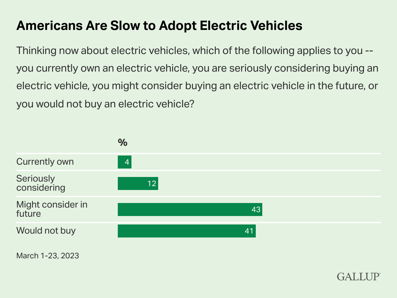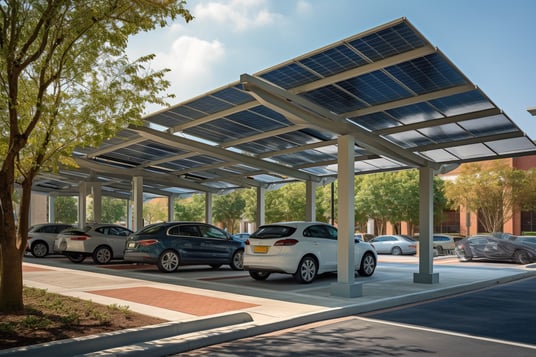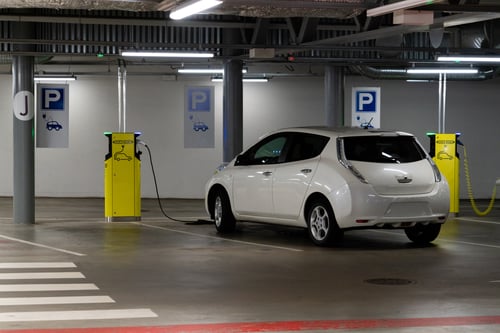Is your community ready for more EV cars and making your own energy?
The integration of solar energy and electric vehicle (EV) charging is a looming topic that condo HOA boards can no longer ignore. As a condo board member, you play a critical role in shaping the policies, governance, and sustainability for your community. You have a responsibility to draw up a set of rules and regulations for your community surrounding EV and solar power. What will you decide?
While the shift towards renewable energy may not be an immediate crisis, its inevitability within the next decade demands attention. From legislative mandates to rising energy costs, there is an ever-advancing need for proactive action. Read on to find out J2’s top recommendations for condo boards to consider as we enter this wave of solar and EV integration.
The Imperative of Solar and EV Integration
As we delve into the reasons behind the pressing need for solar and EV solutions, it becomes evident that we stand at a critical juncture. While not a crisis in the present moment, we are predicting the impending shift towards renewable energy is inevitable within the next decade. 10 years may seem like a long time, but in the context of transitioning to renewable energy on a large scale, a decade is actually a relatively short timeframe. Implementing significant changes to infrastructure, regulations, and consumer behaviors takes time and careful planning.
We’re seeing many things on the horizon, including:
- Legislative mandates, such as the 2035 deadline for all new cars sold to be EV, in multiple states.
- Energy costs are escalating. Energy demand fluctuates throughout the day based on various factors such as time of day (peak hours), weather conditions, and economic activities. In 2021, U.S. retail electricity prices rose at the fastest rate since 2008 (Hodge, EIA).
- Peak energy demand is when energy usage is at its highest, typically during the daytime when businesses are operational and households are active. Off-peak demand, on the other hand, refers to times when energy usage is lower, usually at night or early morning hours. Peak and off-peak demand is a reality in California and similar trends are expected in other states like Washington, Oregon, Idaho, and Utah which are experiencing rapid economic and population growth. We are advocating that our clients take a proactive approach to these impending changes by investing in sustainable energy solutions early.
- The strain on energy grids in suburban areas, exacerbated by the projected surge in EV usage, poses significant challenges to infrastructure sustainability. In 2023, the EV share of the total U.S. vehicle market was 7.6%, according to Kelley Blue Book estimates. A Gallup poll on March 23, 2023 shows 4% of Americans currently own an electric vehicle, 12% are seriously considering buying one, 43% might consider it in the future, and 41% would not buy one.

Implementing Solar Solutions

So what do you need to know if you’re considering taking the next step toward equipping your community for these changes? Navigating the landscape of solar panel systems involves several strategic considerations:
- Where will they go? Will your solar panels be roof-mounted, carport canopies, or standalone solar panel systems? What do your current bylaws allow, and what is reasonable for your community layout and resident desires? For properties shaded by trees, for example, you’ll most likely want to consider ground-mounted or standalone panels.
- Battery or Sell-Back? Another item to consider is the concept of storing your solar power or selling it back to the grid. Battery storage systems offer homeowners the ability to store excess solar energy generated during the day for use during peak demand periods or when sunlight is unavailable, providing greater energy independence and resilience against power outages. On the other hand, selling surplus energy back to the grid through net metering programs can generate additional income or credits on electricity bills, offsetting initial investment costs and further incentivizing renewable energy adoption.
Implementing EV Charging Solutions

The deployment of EV charging stations similarly requires careful planning and decision-making on the part of any condo board:
- Unit vs. Community: The debate between unit chargers and community chargers will need to be discussed amongst your board and the association at large. Community-level chargers offer convenience and promotes the transition to sustainable transportation options. Individual installations provide EV owners with dedicated charging infrastructure tailored to their needs but may involve more coordination and additional costs.
- Adequate power in your panel. Assessing power capacity at both the house panel and neighborhood substation levels is crucial for determining the feasibility of charging infrastructure. You’ll need to determine costs of each type of charger, the size of breaker needed to handle the energy load, and have an expert sign off on your decisions.
- Existing setup. Leveraging existing infrastructure in high-rise buildings and community centers offers streamlined solutions for charger placement. (Think: parking garages next to the elevator room; condo community parking next to the clubhouse…)
- Value add. Community chargers hold the potential to serve as a value-added amenity, generating additional income streams for communities.
- Variety of trades needed. To install these amenities, you’ll likely need a variety of tradespeople to be involved. For example: electricians, solar contractors, general contractors, and electrical consultants.
Governance Considerations
As communities begin implementing sustainable energy solutions, your governing documents will need to be updated to reflect these new systems:
- Addressing the impact on common elements and property rights.
- Strategizing rebate allocation and navigating tax incentives require clear guidelines to avoid ambiguity.
- Rules regarding panel installation, maintenance, and removal must be established to streamline processes and mitigate potential disputes, especially if a resident moves out or the community is being re-roofed.
- Rules about mounting to siding, garages, and roof, which will inherently damage those common elements.
- Guidelines for access, security, and parking restrictions safeguard community resources and infrastructure integrity.
- Securing permits for installation streamlines the regulatory process and ensures compliance with local ordinances.
From what we are seeing today, investing in solar energy infrastructure can significantly enhance the value of your property, akin to the way access to amenities like cable, fiber, or high-speed internet has boosted property values in recent years. (Would you want to move to a community today that doesn’t offer internet and cable?)
Properties equipped with solar panels not only appeal to environmentally-conscious buyers seeking sustainable living options but also attract those who recognize the long-term cost savings associated with renewable energy. Moreover, as energy efficiency becomes increasingly important, properties with solar installations are poised to command higher resale prices. The prospect of rising energy costs and desirability of electric vehicles may drive a wave of homeowners seeking refuge in communities equipped with reliable, self-sustaining solar energy systems and EV charging, resulting in increased demand and property values.
Integrating solar and EV charging technology is no longer a far-off, or off-grid consideration—it is an immediate and pressing concern that offers up-front energy savings as well as a boost in street appeal and property values, which is what J2 is all about.
Hear more about renewable energy options at multifamily buildings and communities, register for The Building Doctor Show and watch Episode #24, an interview and Q&A with Darin Leonard from Trinity Structures (free education from your Building Doctors!)
What are your concerns about the Electric Vehicle and Solar Power changes that are coming? Leave a comment below and Jens will respond!
Sources:
- Brenan, M. (2024, February 7). Most Americans are not completely sold on Electric Vehicles. Gallup.com. https://news.gallup.com/poll/474095/americans-not-completely-sold-electric-vehicles.aspx
- Buehler, B. (2024, January 17). Electric vehicle purchases hit record in 2023. B2B KBB. https://b2b.kbb.com/dealer-resources/news/ev-purchase-high-2023/#:~:text=Electric%20vehicles%20(EVs)%20represent%20the,the%20fourth%20quarter%20of%202022.
- Hodge, T., & Fasching, E. (2022, March 1). During 2021, U.S. retail electricity prices rose at fastest rate since 2008 - U.S. energy information administration (EIA). During 2021, U.S. retail electricity prices rose at fastest rate since 2008 - U.S. Energy Information Administration (EIA). https://www.eia.gov/todayinenergy/detail.php?id=51438